Target Mid Century Modern Dining Table
Saying mid-century modern's had a revival would be one serious understatement. It's hit such a mainstream appeal that it's been deemed the "Pumpkin Spice Latte of design," with the style sold everywhere from Design Within Reach to Target. It's everywhere, and for that very reason, the term's meaning can get a little diluted. What even is mid-century modern these days?! And what truly makes it so? Let's investigate.
It Looks Back To The Future.
At its most basic level, mid-century modern designs are known for juxtaposing sleek lines (think: skinny, peg legs on dressers and tables) with organic shapes, using new materials and methods to reimagine traditional pieces. The looks were futuristic, but they weren't a total departure from the past. In fact, Frances Ambler, author of Mid-Century Modern: Icons of Design, cites a few examples: the hefty English club chair was transformed into the sleek leather-and-plywood Eames Lounger, while Poul Henningsen's Artichoke Lamp was a reconfiguration of a chandelier.

MyLoupe Getty Images
It Turned Designers Into Icons.
Mid-century modern, like any era of design, evolved. The 1939 World's Fair in New York City had brought the geometric forms and clean lines of the Bauhaus and Danish Modernist movements into the American consciousness, but the style didn't really take shape until the late 1940s, lasting well through the 1960s. At the time, American style was all about embracing the future. It was the era of Sputnik, of astronauts hurtling into space, of the Eisenhower Administration giving way to the Kennedys of Camelot, of the Twilight Zone and the Jetsons.
Design should not only be beautifully constructed, functional, and efficient, but attainable.
Studies in nuclear physics, molecular chemistry, as well as a growing obsession with science fiction all played into the futuristic shapes and materials seen in everything from furniture to suburban homes and skyscrapers. And a booming postwar economy meant a rapid rise in homeownership, leading to a surge in the construction of smaller-scale homes and apartments. With the American Dream becoming more of a reality to the middle class, designers and architects honed in on their populist message: Design should not only be beautifully constructed, functional, and efficient, but attainable.
And, during that time, a crew of brilliant sculptors and architects became design icons, shaping the style with the furniture they created for brands like Herman Miller and Knoll: Eero Saarinen, George Nelson, Charles Eames, Harry Bertoia, and Isamu Noguchi.
New Materials Shaped New Designs.

.
Saarinen Round Dining Table
Because bent plywood, fiberglass, foam, aluminum, steel, and plastic laminates were all malleable, Eero Saarinen was able to mold the rounded contours and pedestal for the Tulip chair and table he designed in 1956, and Eero Aarnio to sculpt his futuristic-looking Ball chair in 1965. But rather than cover up the industrial materials with layers of batting and fabrics, "they never tried to disguise it as something else," Frances notes. "A plywood chair, for example, celebrated the shapes that could be created with the material, and Warren Platner's elegant dining chair makes no secret of the fact that it's made from steel rods."
At times, designers also played with colors—the earthy hues of the 1950s eventually giving way to brighter, more saturated colors, as the Space Age and Pop Art came into the picture.
Two Approaches Cemented It In Pop-Culture History.
While some people argue that mid-century modern has become more of a term for modern design in general than a specific look, part of the struggle to define it may come from how wide-ranging the style is. Part of that is due to the two diverging (yet complementary) directions things took.
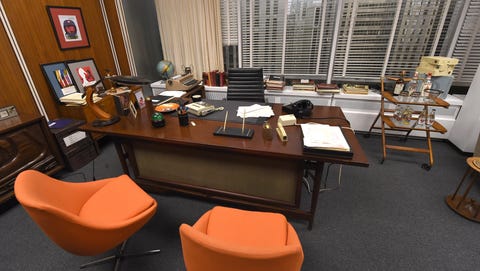
TIMOTHY A. CLARY Getty Images
American-based modernists loved industrial materials and the efficiency of mass production, while their counterparts in Scandinavia (the Soft Modernists) were dedicated to the longstanding tradition of crafting their chairs and tables out of natural elements, like wood and leather, favoring the handmade to the mechanical processes. The result was exquisitely made pieces that were as celebrated as much for their quality as for their simplified, modern forms — think Hans Wegner's Wishbone Chair or Alvar Aalto's gently curving birch-and-beech wood chair.
This content is imported from {embed-name}. You may be able to find the same content in another format, or you may be able to find more information, at their web site.
The Aesthetic Took Hold In Architecture, Too.
Advances in construction methods and materials made it possible for the likes of Richard Neutra, Philip Johnson, and Pierre Koenig to create the simplified long and low flat-roofed homes that came to define this period. Floor plans were created with an organic flow and multipurpose spaces in mind, with one room seemingly melted into the next. Many architects also constructed split-level homes, which allowed for several stories while retaining the horizontal planes.
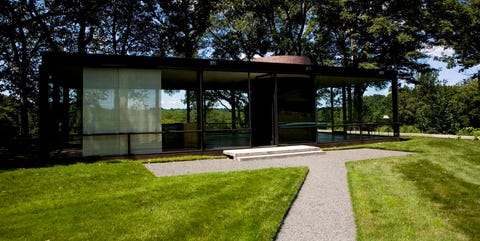
Ramin Talaie Getty Images
As with furniture, the materials themselves were a key element in these buildings — stone fireplaces extending into the walls were a common sight in living rooms, while terrazzo floors and wooden planked ceilings ran throughout. This was a clear continuation of the Bauhaus notion of gesamtkunstwerk: disparate elements or materials coming together to create a single entity.
Natural light became even more important in houses' design, too. Architects abandoned the typical 3-foot by 5-foot window frame for vast glass walls and sliding doors, effectively bringing the outdoors in. While definitely more prevalent in California due to the state's temperate climate, examples of this style can be found across the country, from the suburbs of Chicago to New Canaan, Connecticut.


Two-Tone Writing Desk
amazon.com
$395.00
$232.88 (41% off)

Modway Loveseat
amazon.com
$937.50
$812.50 (13% off)



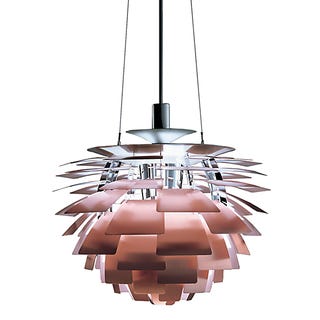
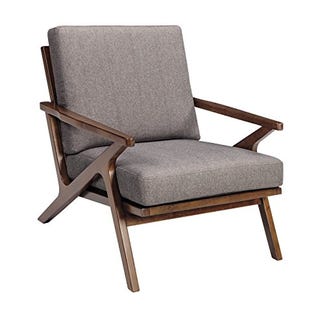
Wavecove Accent Chair
amazon.com
Mid-Century Modern's Popularity Has Snowballed Over Time.
Many of the exact pieces created in the 1950s and 60s continue to be reproduced today through companies like Design Within Reach, Herman Miller, and Knoll. In some cases, they're even more popular now than they were 60 years ago. Even modern retailers like West Elm are reimagining mid-century styles. So how have these designs been so resilient over the years? "They were designed for a way of living that is still, essentially, our way of living: We want chairs to curl up in, tons of storage, portable pieces—everything on a smaller scale," Frances notes.
Given how many millennials are flocking to major cities, living in postage-size apartments, this should come as no surprise. Cara Greenberg—who literally wrote the book on mid-century modern and is credited with coining the term—agrees: "it seems to appeal anew to each rising generation of young people. Mid-century design hasn't been bested by any other movement since, so it remains the style of our own time, not of some antique past. And it still looks cool!"
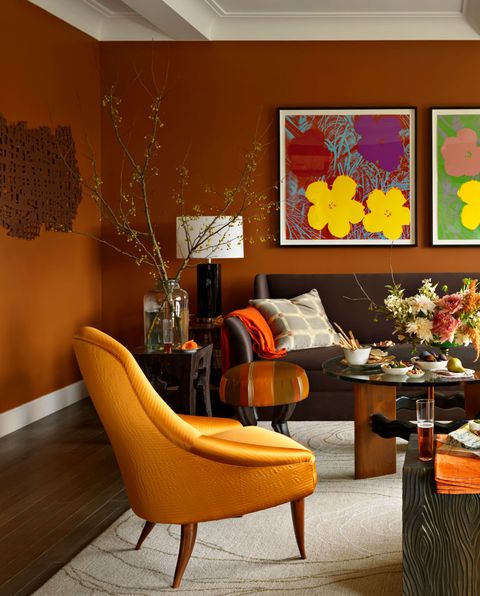
Thomas Loof
What's clear is that mid-century modern remains part of the current zeitgeist, as witnessed in the popularity of Mad Men or the countless films, advertisements, and magazine spreads shot at Koenig's Stahl House overlooking Los Angeles or David Netto's Neutra-designed home in Silver Lake.
Perhaps, even though we're in the age of iPhones and drones (what a time to be alive!), the continuing allure and popularity of mid-century modern lies in ability to simultaneously take us back to the past while also propelling us to dream of the infinite possibilities of the future.
Follow House Beautiful on Instagram .
This content is created and maintained by a third party, and imported onto this page to help users provide their email addresses. You may be able to find more information about this and similar content at piano.io
Target Mid Century Modern Dining Table
Source: https://www.housebeautiful.com/design-inspiration/a22877276/mid-century-modern-design-explained/



Tidak ada komentar: